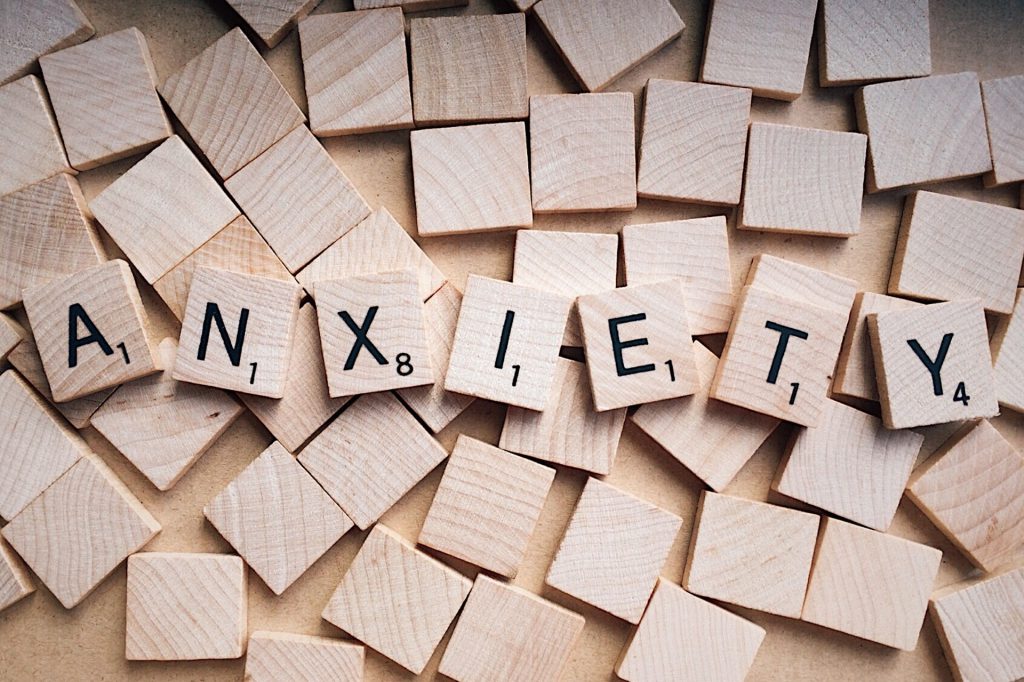8 million.
That’s how many people in the UK are experiencing anxiety at any one time. What’s even more shocking is that less than half of them receive support or know how to manage the condition.
Anxiety can range from generalised anxiety disorder (GAD) which is widespread intense worrying, to panic disorder with sudden episodes of fear, heart palpitations, shaking, or sweating.
Dealing with anxiety can be an overwhelming and at times a lonely existence. Not only that but worrying about everything, let alone worrying about worrying, is an exhausting and debilitating way to live. It’s alarming to us here at Morale that so many people struggle with this condition day in and day out, yet not many people know how to manage it.
There are so many tricks out there designed to calm you down and alleviate your anxiety. Some work, some don’t but there’s one that stands out as the front-runner for its efficiency and simplicity. The 3-3-3 rule has long been a highly effective and popular method of combatting anxiety, and what’s even better, it’s so easy everyone can do it!
What does anxiety look like?
Anxiety comes in many shapes and sizes and typically differs from person to person. It can range from butterflies in your stomach to a full-blown panic attack. Whatever your symptoms, anxiety isn’t fun and can leave you feeling pretty helpless. If given the power, anxiety will try to spoil everything in its path and can become an all-consuming condition. Understanding the early signs when you’re starting to feel anxious is the best way to get on top of it and prevent it from spiralling out of control.
Symptoms of anxiety
- Butterflies or feeling jittery
- Stomach pain
- Nausea or digestive problems
- Headaches
- Insomnia or difficulty sleeping through the night
- Fatigue
- Shortness of breath or rapid breathing
- Increased heart rate
- Sweating
- Shaking or trembling
- Muscle tension or pain
Symptoms of a panic attack
- Trouble breathing
- Light headedness or feeling that you might pass out
- Numbness
- Tingling throughout the body
- Chest wine
- Fear that you’re going to die
In theory, all of these symptoms are designed to help you deal with threats as they arise, also known as the fight-or-flight response. For example, breathing rapidly is your lungs trying to move more oxygen around your body in case you need to flee a danger. However, your body isn’t supposed to exist in a constant state of fight-or-flight, and when this happens with chronic anxiety it can lead to a myriad of problems. Tense muscles, designed to get you ready to move away from danger quickly, can result in pain, headaches, migraines, and developmental problems. A surge in adrenalin and cortisol is responsible for increased heart rate and breathing, but also affect the body’s digestion and blood sugar control.
What is the 3-3-3 rule for anxiety
The 3-3-3 rule for anxiety is a very common and effective technique for coping with anxiety. Anxiety disorders are largely irrational and arise when a situation is blown out of proportion or misunderstood. When the negative thoughts start whirring, it can be so easy to let them spiral out of control until your palms are sweating and your pulse is racing. By grounding yourself in the present and refocusing your mind, you are able to see things more clearly and re-evaluate the ‘threat’ causing your body to enter fight-or-flight mode.
The 3-3-3 rule involves looking around your environment and naming:
- 3 things you can see
- 3 things you can hear
- 3 things you can touch
Starting with what you can see, take a look around at your surroundings and focus on some physical objects in your immediate vicinity- these could be anything! Take a closer look at them and focus on them one at a time. What are their individual details? What is it made from?
The next step is to listen, close your eyes if it’s easier to focus. What can you hear? Maybe there is traffic nearby or birdsong if you’re outside in the country. Like the above, focus on each sound, how do they sound? Where do they come from?
Finally, the last step of the 3-3-3 rule for anxiety is to hone in on your sense of touch. Focus on 3 body parts one at a time and try and get each one moving a little bit. If you’re thinking about your toes, try and give them a little wiggle and think about the contact with your socks or shoes, for example.
When using the 3-3-3 rule, it’s important to take your time and be patient with yourself. Immerse yourself entirely in each sense before moving on to the next to have the desired effect. If you try to sprint through as quickly as possible, you won’t be fully able to disassociate yourself from your anxious thought process.
The purpose of this is to re-centre the mind and ground yourself, allowing you to process the situation at hand and start to calm down. This tool is particularly useful when you’re feeling anxious or overwhelmed. Even when you are not facing an extreme anxiety response, the 3-3-3 method is a great way to focus the mind and prepare for something, like an interview, an exam, or a sporting match, for example.
Anxiety is a debilitating and difficult disorder to live with, and for many, it can be a suffocating and isolating experience. It becomes increasingly hard to make plans and socialise or enjoy things, however simple, in fear of an anxiety attack spoiling the fun! 8 million people are battling with anxiety right now, which probably means someone in your network is too. With Morale, you can lend a hand and help someone start to rewrite their mindset, without getting in the way or intruding. Simply send out an anonymous affirmation each morning with a few words of support, and you will be giving someone the boost they need to overcome the curveballs that daily life throws at them.
Our app is available to download from Google Play and Apple’s App Store.
Remember to follow us on Instagram, Facebook, and Twitter to stay in the loop with everything going down at Morale HQ. We promise great content and even greater vibes!
We’re always on the hunt for ways to improve, so if you’ve got any ideas for us we’d love to hear them. Pop them in an email and send it to contact@moraleapp.co











